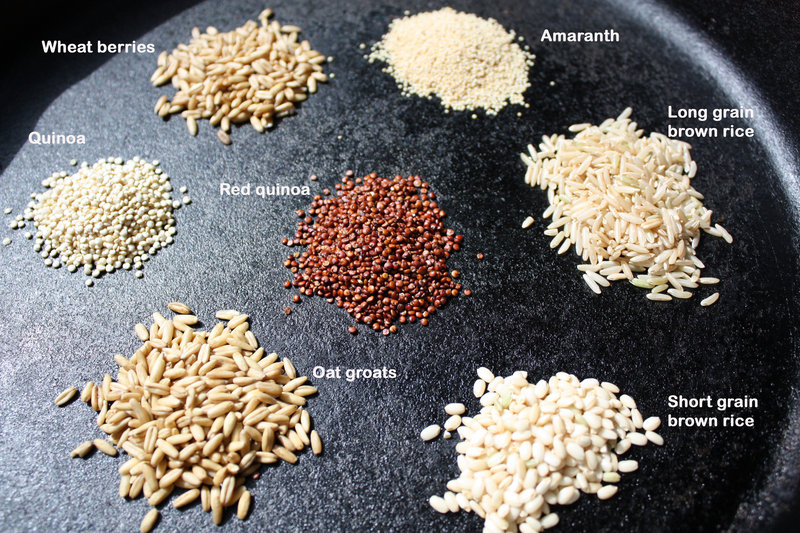Look at the packaging for anything from Wonder Bread to Cocoa Puffs and you’ll see big splashy letters proclaiming: “Made With Whole Grain.” These claims reflect the fact that Americans eat very few whole grains, but are constantly told they need to eat more.
But if sound nutrition and good health are your goal, I say don’t believe anything you read on the front of packaged food. Instead, seek out foods that rarely rely on labels, because they come in the packages nature gave them.
Whole grains are a great example.
But first, a little clarification. Whole wheat (or rye or oat) flour is a good choice; however, it’s technically no longer a whole grain but a cracked grain.
The distinction lies in the milling process.
Let’s use oats as an example. Oats grow on a grass-like annual plant that looks similar to wheat. When dried, the grains can be removed from the inedible hulls, and you have ready-to-cook oat groats. This is the least processed and most nutritious choice.
Oats can be further processed to reduce cooking time by slicing each groat into smaller pieces. This is what is known as steel cut oats.
If you steam oat groats and run them through rollers, you have old-fashioned rolled oats. Take steel cut oat groats, steam them and then roll them, and you have quick-cooking oatmeal. To make instant oatmeal, quick-cooking oats are cooked and then dried and often mixed with sugar and other additives.
When oat groats are coarse ground, they’re known as Scottish oatmeal. When they’re fine ground, they’re known as oat flour.
From a dietary perspective, the less processing a grain has undergone, the more nutrients it retains.
“Whole grains are a complete carbohydrate,” said Kendall Scott of Kendall Scott Wellness, who will teach a class Thursday night on how to cook and prepare whole grains at The Prep Kitchen in Freeport.
“And the body absorbs whole grains slowly. The big difference people notice when they eat whole grains is that they’ll be full much longer.”
In contrast to the slow absorption of whole grains, refined white flour is instantly converted into sugar by the digestive system, causing blood sugar and insulin to spike and then just as rapidly crash.
Other nutritional benefits provided by whole grains include fiber, B vitamins, magnesium, selenium, potassium and many other nutrients.
“The easiest way to start adding whole grains into your diet is as a side dish,” Scott said. “Swap out potatoes, pasta or bread for whole grains.”
And there are so many to choose from. The most familiar is brown rice, but you can change this up by using wild rice, millet, hulled barley, wheat berries or quinoa. Once cooked, these grains can be eaten plain or jazzed up by the addition of vegetables and seasonings.
For breakfast, oat groats offer a filling and tasty start to the day and can be garnished with berries, cut fruit, dried fruit, nuts or seeds.
Those new to eating whole grains may feel that the grains lack much in the way of taste. But don’t despair, you can change this by slowing down to appreciate the unique texture and nutty-sweet flavor of whole grains.
“Our palates have gotten used to super sweet, super salty food,” Scott said. “But if you take the time to be mindful and chew your food slowly, you’re going to really taste that food. For a whole grain, it tastes sweeter when you chew it slowly.”
Staff Writer Avery Yale Kamila can be contacted at 791-6297 or at: akamila@pressherald.com
Follow her on Twitter at: Twitter.com/AveryYaleKamila
Send questions/comments to the editors.



Success. Please wait for the page to reload. If the page does not reload within 5 seconds, please refresh the page.
Enter your email and password to access comments.
Hi, to comment on stories you must . This profile is in addition to your subscription and website login.
Already have a commenting profile? .
Invalid username/password.
Please check your email to confirm and complete your registration.
Only subscribers are eligible to post comments. Please subscribe or login first for digital access. Here’s why.
Use the form below to reset your password. When you've submitted your account email, we will send an email with a reset code.